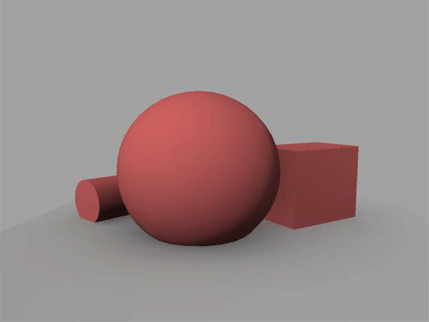Ambient Occlusion
Software used : Maya 2009
Date : May 17, 2009
Hey guys, this tutorial is about little tricks for using ambient occlusion. Ambient occlusion is the act of adding extra details to your shadowed areas. As many of you may or may not know its pretty much in the steps of ambient occlusion pass + your normal render = a nicer final render result. It gives the professional look without needing lights.

Usually creating an ambient occlusion pass slows down your render time drastically and you usually have to make a seperate image pass such as the one in the image above. But recently I found out that mental ray's mia material's has built in ambient occlusion feature. Its faster and looks just as good. Here's what it looks like...

To make it work you need to have some form of indirect illumination. I just checked on final gather in the indrect illumination tab found under render settings for mental ray. But there are no lights in this image.

Next, create a new mia x material. I personally just right click my object> assign new material> mia x material. Simple. Then I just selected a present I want, (though its not manditory) scrolled down to ambient occlusion section and clicked the box! Its that simple, and its great way to get that ambient occlusion look without the render time. It becomes most noticeable on objects that come in contact with each other. You'll notice you get darker contact shadows so everything feels grounded and in place.
But ambient occlusion doesnt just apply to 3d. You can use this same concept to create 2d paintings. Here is an example of "painting-in" your own ambient occlusion pass.

We take the a red ball as our starting base or "normal render like the 3d example first shown above. Then we make a new layer that's completly white and paint it in so that it looks like ambient occlusion. We now have a final realistic looking ball.
Now we can take that ball and turn it into a head following the same steps to get similar results. Keep in mind that ambient occlusion is just mainly use for contact areas or to indicate that one piece is seperate from another. Its not actually suppose to replace using lights and cast shadows. Using only black when you color will give your painting a monotone feeling. Unless thats the look you want, throwing in different hues inbetween your shadows will add more vibrance to your final look. I didnt do that in the head example but for me personally, when I paint I try to keep the idea of ambient occlusion in my mind while working.
Anyway thats it for today guys. I just wanted to share this little bit of knowledge and help give back like those who once helped me. We gotta help each other out right?I hope this was of some use. Till next time, peace and GODbless.
-Corey